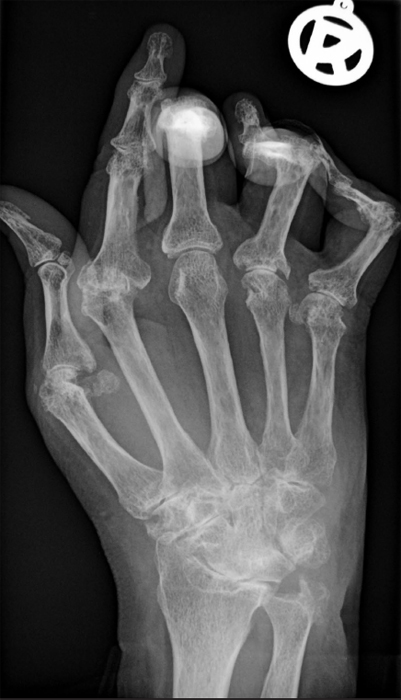
Ravinder N. Maini (b. 1937), Marc Feldmann (b. 1944)
Rheumatoid arthritis (RA) affects about 1 percent of the population worldwide and occurs in women about three times more often than in men. Symptoms of RA include inflammation, pain, and swelling of the hands and feet, often accompanied by destruction of the joints. Inflammation begins at the synovium—the membrane enclosing the joint cavity—progressing over several years to joint destruction.
Aspirin and related nonsteroidal anti-inflammatory drugs (NSAIDs), as well as cortisone-like drugs, reduce pain and inflammation without altering the progression of RA. By contrast, methotrexate and other DMARDs (disease-modifying anti-rheumatic drugs) slow the disease and delay joint deterioration. However, their mechanism of action is not clear.
During the 1980s and 1990s, Australian immunologist Marc Feldmann and Indian-born rheumatologist Ravinder N. Maini, working together at Imperial College School of Medicine, London, studied mechanisms underlying autoimmune diseases—in particular, RA. They found that tumor necrosis factor (TNF) was the most important chemical responsible for joint destruction. Attention was then directed toward developing biologic drugs that bind to and inactivate TNF.
The first such TNF-blockers were Enbrel (etanercept), Remicade (infliximab), and Humira (adalimumab), introduced between 1998 and 2002. These biologic-response modifying drugs are very highly effective for the treatment of moderate-to-severe RA, with more than 70 percent of patients showing an improvement in their symptoms (pain and swelling) within weeks after the start of therapy. They are even more effective when used in combination with methotrexate or another DMARD.
Because TNF-blockers are proteins, they are not active by mouth and must be injected. Remicade is injected intravenously generally at four- to eight-week intervals. As TNF plays a key role in the body’s immune response against bacteria, the use of TNF-blockers increases the risk of severe infections, including tuberculosis.
Because joint destruction occurs within the first few years after symptoms appear, RA is now being treated more aggressively with DMARDs and TNF-blockers that slow the progression of the disease.
SEE ALSO Aspirin (1899), Amethopterin and Methotrexate (1947), Cortisone (1949), Biologic Drugs (1982).

This x-ray is typical of the hand of an individual experiencing rheumatoid arthritis—which, at the point shown, can no longer be reversed. Administering Enbrel and related disease-modifying anti-rheumatic drugs (DMARDs) at an earlier stage might have delayed the onset of joint deterioration and deformation.